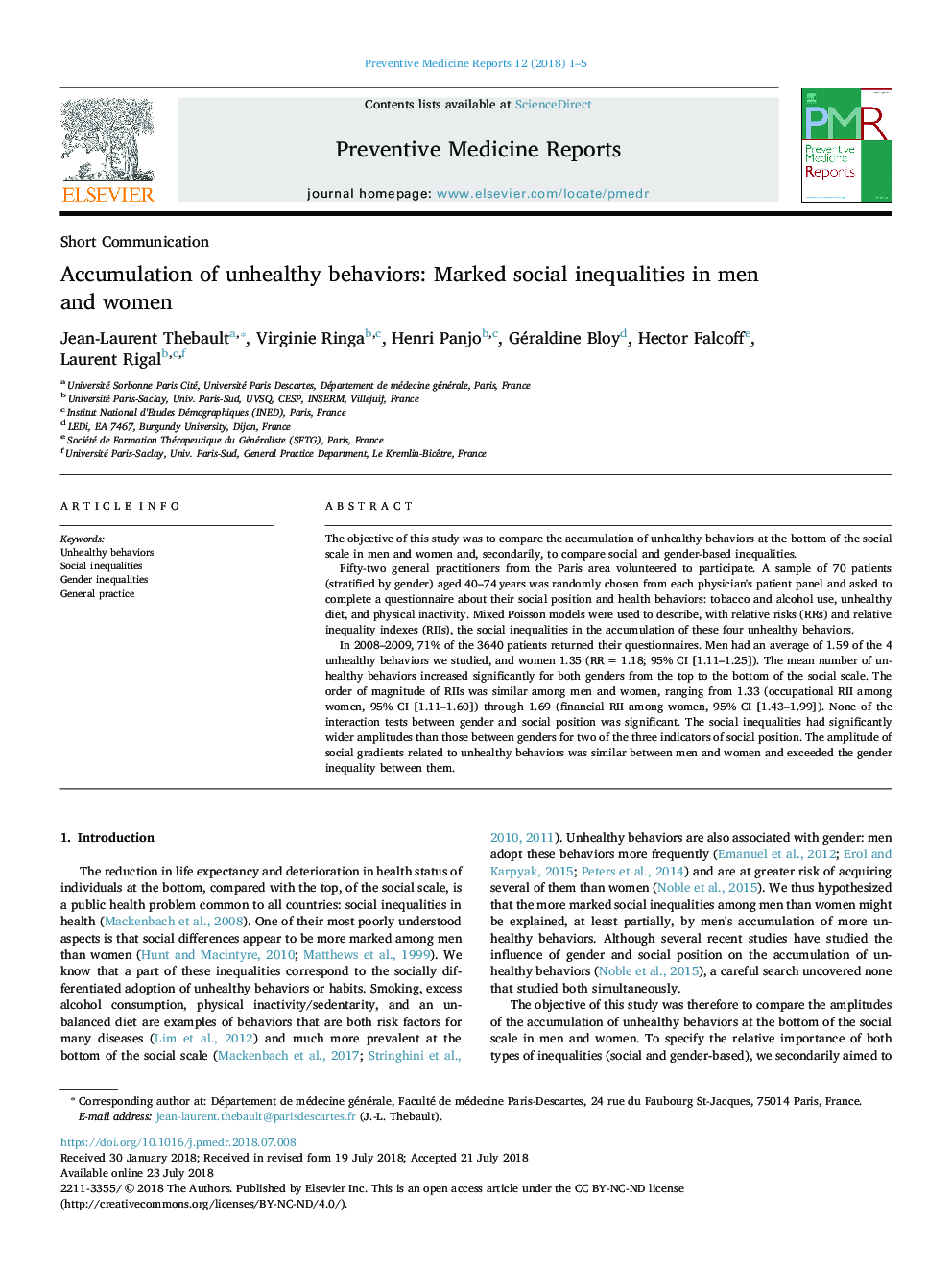| Article ID | Journal | Published Year | Pages | File Type |
|---|---|---|---|---|
| 8818447 | Preventive Medicine Reports | 2018 | 5 Pages |
Abstract
In 2008-2009, 71% of the 3640 patients returned their questionnaires. Men had an average of 1.59 of the 4 unhealthy behaviors we studied, and women 1.35 (RRâ¯=â¯1.18; 95% CI [1.11-1.25]). The mean number of unhealthy behaviors increased significantly for both genders from the top to the bottom of the social scale. The order of magnitude of RIIs was similar among men and women, ranging from 1.33 (occupational RII among women, 95% CI [1.11-1.60]) through 1.69 (financial RII among women, 95% CI [1.43-1.99]). None of the interaction tests between gender and social position was significant. The social inequalities had significantly wider amplitudes than those between genders for two of the three indicators of social position. The amplitude of social gradients related to unhealthy behaviors was similar between men and women and exceeded the gender inequality between them.
Related Topics
Health Sciences
Medicine and Dentistry
Public Health and Health Policy
Authors
Jean-Laurent Thebault, Virginie Ringa, Henri Panjo, Géraldine Bloy, Hector Falcoff, Laurent Rigal,
